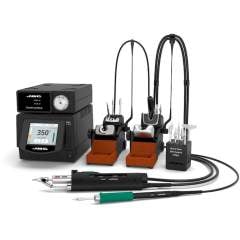Enhancing Industrial Efficiency with Bosch Rexroth Systems
Enhancing Industrial Efficiency with Bosch Rexroth Systems
Blog Article
Enhancing Industrial Efficiency with Bosch Rexroth Systems
Automation and movement control techniques are spinning the guidelines of production, logistics, and actually power management. Behind the layer, innovative products and services and powerful improvements are driving effectiveness, sustainability, and productivity to outstanding new heights. What makes these alternatives this type of warm soldering station (lötstation) subject, and why are they topping trend provides in professional groups?

Shaping the Future with Numbers and Trends
Nowadays, around 60 percent of factories in advanced economies have executed some amount of computerized activity control. Contemporary detectors, electrical pushes, and electronic controllers today underpin everything from robotics to conveyor belts. According to a 2023 record, the global action get a grip on industry alone is estimated to reach $21 million by 2027. That number shows a compounded annual development charge (CAGR) of 6.5 percent, showing exactly how keen industries are to embrace high-precision automation.
But it's not only standard factories that are benefitting. Circulation stores across North America and Europe are reimagining workflows through wise conveyor programs and autonomous vehicles. These improvements improve throughput by around 30 per cent, cut job expenses, and reduce problem costs across fast-paced source chains.
Accuracy Matches Production
High-precision motion engineering has changed into a must-have in groups demanding reliability and reliability. Semiconductor production is one example, wherever linear activity books and multi-axis controllers supply precision tested in microns. New surveys show that producers leveraging these solutions see problem prices decrease by as much as 40 per cent, providing them with an important side in a fiercely aggressive field.
Green power and e-mobility are viewing similar revolutions. Wind and solar installations increasingly count on real-time automation to improve energy catch and streamline maintenance. This smart strategy helps cut downtime, with one study noting a 20 percent reduction in maintenance costs at features which have used automatic control systems.
The Wise Manufacturer Revolution
Automation is no longer just about lowering individual error. It's about making smart factories, where every part communicates seamlessly. Systems featuring predictive analytics and IoT connectivity monitor equipment health and predict preservation needs before breakdowns occur. Research indicates that predictive maintenance can decrease unplanned downtime by up to 50 percent, translating into substantial savings for plant operators.
From automotive suppliers ramping up production rate to logistics firms seeking specific handling and energy savings, the numbers inform a convincing history relating to this accelerating sector. In the event that you monitor recent styles or shape purchasing choices, understanding where the industry is went is crucial.
What's Next for Automation and Motion Control?

The focus on sustainability, data-driven production, and better source stores is only going to grow. Worldwide demand for robotics and sensible controllers continues to rise, particularly in groups where efficiency and flexibility suggest survival. Industries buying next-generation automation are setting themselves apart—with the figures to show it.
For companies mapping out their next move, automation and motion get a grip on are getting less of an option and more of a necessity. With earnings tested in larger output, decrease prices, and new functions, the situation for adoption has never been clearer.
Report this page